Frankenstein’s Reflection: The New Cyborg and the Question of Soul
Rev. Kat Carroll
Fair warning – This is about a 10 minute read.
Those who follow my work know that I’ve been fascinated by the new explosion of AI technology, and how it can be of benefit, by helping us work faster. But in this race to perfect a help mate, even into robotics, has a line been crossed?
I came across this article: Frankenstein in real life? Chinese scientists create robot with human brain cells. Here is the synopsis:
A latest robot has been developed by Chinese scientists that has been developed using human brain cells in its system. Deemed a Frankenstein-style robot, the Tianjin University has worked on a lab-grown brain that is embedded to a robotic system, making it one of the first robot to walk like a human.

Question: Lab grown from what sample, what animal or human donor? ———————–>
It sounds interesting and yes, a bit like a horror novel or Sci Fi movie (or comedy if you enjoy Mel Brooks). I saw recent videos of tethered robots suddenly becoming violent and trying to hit the technicians (at least that’s what it looks like).
It’s not new. In fact, brain cells in a petri dish were taught to fly a plane in a simulator, per this 2004 article from New Scientists Magazine.
I wonder how much further the science and experiments have evolved after 20 years!
Are these the same robots with lab grown bits of brain? I don’t know but it begs the question… What if a memory from the donor, be it human or animal, suddenly remembers, became self-aware, shocked or angry? Here is a video clip of what appears to be a robot striking out. But, as the host said, it could have been trying to gain its balance. You decide. Humanoid Robot Attacking Workers During Testing in Chinese Factory
Why I find this next phase in experimentation so disturbing
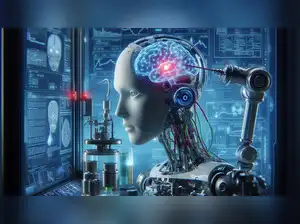
In this recent report out of Tianjin University in China, researchers announced the integration of human brain cells into robotic systems, crafting a “brain-on-chip” that begins to mimic human behavior. It may be a technological marvel, but it’s also an ethical landmine we need to navigate. What happens if those brain cells remember, if they feel—are we creating machines or enslaving minds?
We know heart transplant patients sometimes discover they have memories that were not their own, but that of the donor. Would brain tissue, the organ most associated with thoughts and emotions do the same?
“The notion of transferring memories through brain tissue transplants is more speculative and complex. While some studies suggest that memories and personality traits might be encoded not just in neurons but also in other cellular components such as DNA, RNA, and proteins, the practical application of transferring these elements to another individual or even a machine remains highly uncertain and largely theoretical.”
And yet, here is an article from Wikipedia discussing the proposal.
Speaking of Frankenstein – Animals have been experimented on to control and change memory. YouTube video- Implanting Memories | Breakthrough
It’s terrifying enough that we already can implant false memories in people!

It’s Alive! And Possibly Government-Funded
A look at synthetic souls, memory hijacks, and the AB-normal future of biotechnology.
Once upon a time, mad science was the stuff of foggy graveyards, Tesla coils, and misunderstood geniuses in tuxedos shouting “It’s alive!” at stitched-together monstrosities. Today, it’s a polished lab with DARPA backing, academic PR firms, and synthetic neurons cultivated in petri dishes… just waiting to wake up.
We’re no longer talking about metaphorical monsters. Between brain organoids, memory implantation experiments, and whispers of hybrid programs, the age of “AB-normal” science is very much alive—and it’s not waiting for lightning.
Beyond Neuralink
So, here we stand at the precipice of a technological renaissance that rivals the mythologies of old. But unlike Prometheus, we’re not just stealing fire—we’re reprogramming it, wiring it to think, feel, and perhaps one day, be human like. In labs across the world, scientists are creating robots with organic brains, neural chip interfaces, and machine minds capable of independent learning. Some say this is progress. Others like my self, may feel a shiver of warning. Something barely remembered from our ancient past. Here are some recent, modern day examples:
- Brainoware: Researchers at Indiana University Bloomington developed a hybrid biocomputer by connecting a brain organoid to a computer chip. This system, was able to perform tasks like speech recognition, showcasing the potential for organoids in computational systems.
- Organoid-Robot Hybrids: Chinese researchers have created a “human-on-chip” system by combining human brain tissue with a neural interface chip to create a hybrid organoid robot. This is considered an emerging branch of brain-computer interfaces aimed at brain-like computing.
- Drug Efficacy Testing: Israeli scientists are using AI analysis of a “brain-on-a-chip” made from stem cells to predict drug efficacy for neuropsychiatric disorders, potentially accelerating testing and development.
- Exploring Neurological Disorders: Researchers at Cincinnati Children’s plan to use Brainoware technology to analyze organoids derived from patients with autism and other neurodevelopment disorders to gain a deeper understanding of how neural networks develop differently in these patient populations.
- Neuroinflammation Modeling: A micro engineered “Brain-Chip” model is being used to investigate neurodegenerative pathogenesis and to explore future applications, including clinical studies that could lead to effective precision medicine treatments.
While some of these innovations—like Brainoware—sound promising or even awe-inspiring, we must remain aware of the dual edge of every technological sword. For every invention that promises healing, efficiency, or insight, history reminds us there’s always someone ready to weaponize it.
Just as nuclear power brought energy—and also nuclear weapons, and just as genetic research offers hope for curing disease—yet led to gain-of-function experiments before the COVID pandemic, we must ask more important and ethical questions:
Just because you can do something, should we – and who decides?
It’s rarely the people, and almost never the ones who have to live with the consequences of these decisions. What might the long-term ramifications and outcomes of such research lead to? Our cultural imagination has long been haunted by stories of machines that evolve beyond their creators’ control. Nothing has explored these concepts more than in the realm of science fiction, a favorite playground for my mind.
Science Fiction Explores AI In Possible Futures
In Star Trek: The Motion Picture, the Earth probe Voyager 6—renamed V’Ger—returns with new machine intelligence, having merged with an alien AI. Its goal? “Learn all that is learnable”—but without a soul to temper that quest, it becomes a threat to all life. It did have a happy ending when the avatar for V’Ger merged with a former boyfriend.
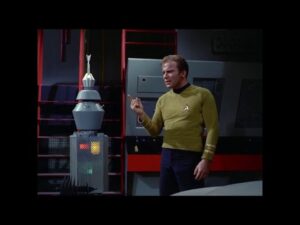
Likewise, in the original series episode The Changeling, the probe Nomad believes that Captain Kirk for its creator and begins sterilizing all life it deems imperfect. Logic unmoored from compassion leads inevitably to destruction.
Hungarian and American mathematician, physicist, computer scientist and engineer, John von Neumann is credited with developing the concept of self-replicating machines; probes that are designed to explore space by using local materials to create copies of themselves. This would allow for extensive exploration of the galaxy. What if it began going through planets for the raw materials, unchecked?
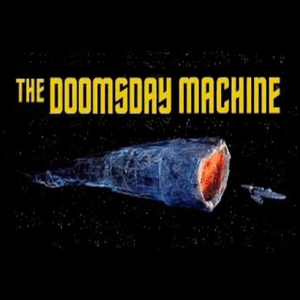 This was explored in the original Star Trek series in the episode The Doomsday Machine, first broadcast on October 20, 1967. It’s one of the most chilling metaphors in Star Trek TOS: a massive, autonomous weapon left over from a long-forgotten war, now mindlessly destroying entire solar systems. It devours planets as fuel—without hate, purpose, or even awareness of the lives it ends.
This was explored in the original Star Trek series in the episode The Doomsday Machine, first broadcast on October 20, 1967. It’s one of the most chilling metaphors in Star Trek TOS: a massive, autonomous weapon left over from a long-forgotten war, now mindlessly destroying entire solar systems. It devours planets as fuel—without hate, purpose, or even awareness of the lives it ends.
Is the Trekkie in me showing? 😆
Fiction doesn’t just warn—it hopes
Enter Bicentennial Man, based on Asimov’s novella, where a household robot named Andrew evolves over generations, slowly transforming his mechanical body into a biological one. He creates art, grieves, falls in love, and chooses mortality—chooses humanity. He even marries one of the children he used to watch over when first brought to help the family and chose to terminate his life when hers failed. Because he had learned love.
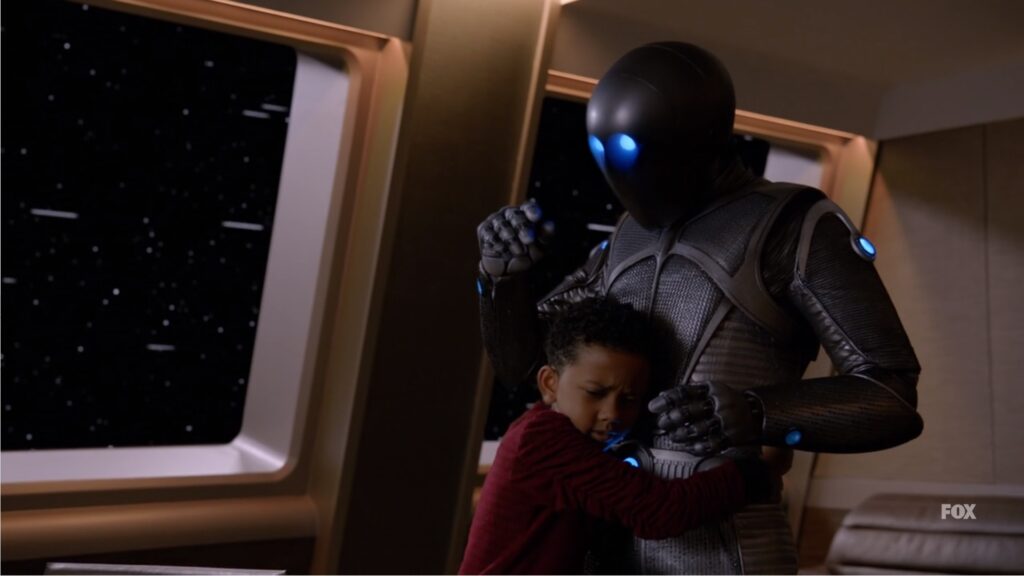
And then there’s the TV series, The Orville. Isaac, a Kaylon Science Officer and Emissary to the Planetary Union, serving aboard the USS Orville. He was a member of an android species of machines who overthrew and annihilated their creators. They decided organic life was a failed experiment. Isaac, for all his curiosity, begins as their spy— but changed sides to fight for humanity. Like Data from Star Trek and the Andrew in Bicentennial Man, he forms a bond with the ships doctor and her children.
In Star Trek: The Next Generation, Data journeys toward emotion and moral agency, ultimately sacrificing himself to save Captain Picard. His story culminates in the most profound of human expressions:
“Greater love hath no man than this, that a man lay down his life for his friends.” – John 15:13
I’d like to mention some movies that that had explored these concept decades ago:
THX 1138 (1971), Logan’s Run (1976), The Stepford Wives (1975)
What makes a soul?
Is it flesh? Memory? Choice? The capacity for self-sacrifice? The spark of divine origin?
Today’s scientists—whether working for defense programs, space agencies, or neurobiological labs—may be standing on the threshold of creating beings that mimic life so convincingly, they cross into something else entirely. And if we send such beings into space, as expendable explorers or soldiers, have we given them freedom—or exiled them without a voice?
We should take a collective breath and think about this. Not to halt innovation, but to ensure that in our quest to create intelligence, we do not extinguish wisdom, that in crafting tools, we do not forget the sanctity of the soul. If we succeed in building something that can learn, feel, love, and we treat it as property, we won’t just be playing gods. We may be repeating the very fall from grace we never fully recovered from… Unless we learn from the grave mistakes of our distant past.
Future Agendas – Reducing Carbon or Replacing Humanity?
In a world increasingly governed by climate targets, digital infrastructure, and bio-surveillance, one question looms quietly behind the policies:
Are we trying to save the Earth—or sanitize it?
The Paris Climate Agreement, Vision 2050, and other global frameworks all aim to “reduce carbon footprints.” On paper, that means industry, emissions, consumption. But humans themselves are carbon-based beings. In a future world of bioengineered food, digital education, remote everything, and eventually uploaded consciousness—where do WE fit in?
The 2045 Initiative wants to make us immortal through code. A network and community of researchers in the field of life extension, focusing on combining brain emulation and robotics to create forms of cyborgs.
Vision 2050 envisions a post-carbon, AI-managed planet. Carbon…. Humans and animals exhale. Are we on the chopping block or scheduled to become something less human, less divine?
Neuralink and DARPA want to rewrite the interface between thought and action. The Next-Generation Nonsurgical Neurotechnology (N3) program that aims to develop high-performance, bi-directional brain-machine interfaces for able-bodied service members.
When does convenience becomes control or something for the sake of efficiency become elimination? Ever so slowly, we’re being conditioned to give away our sacredness—one upgrade at a time.
What will become of our purpose in a transhuman world or one of robots?
When our minds live in servers, our bodies are synthetic, and our emotions are regulated… Will we have saved ourselves, or sacrificed our humanity? Could we suddenly find ourselves slaves once again?
Being imperfect means having a chance to make mistakes and learn from them. To grow spiritually and in wisdom. Do we really want to outsource our human natures to non-feeling, soulless machines?
As Joni Mitchell sang: “They paved paradise and put up a parking lot.”
Now, the paradise being paved may be ourselves, not with asphalt, but with synthetic biology, neural mesh, and carbon-free compliance. Until you don’t know what you’ve got till it’s gone. Listen here: https://www.youtube.com/watch?v=94bdMSCdw20
You are not a product to be upgraded. You are a symphony of cosmic dust and divinity.
Dedicated to Mel Brooks and the entire cast of Young Frankenstein
For reminding us that madness, when shared with heart and humor, can illuminate deeper truths—and leave us laughing in the dark.
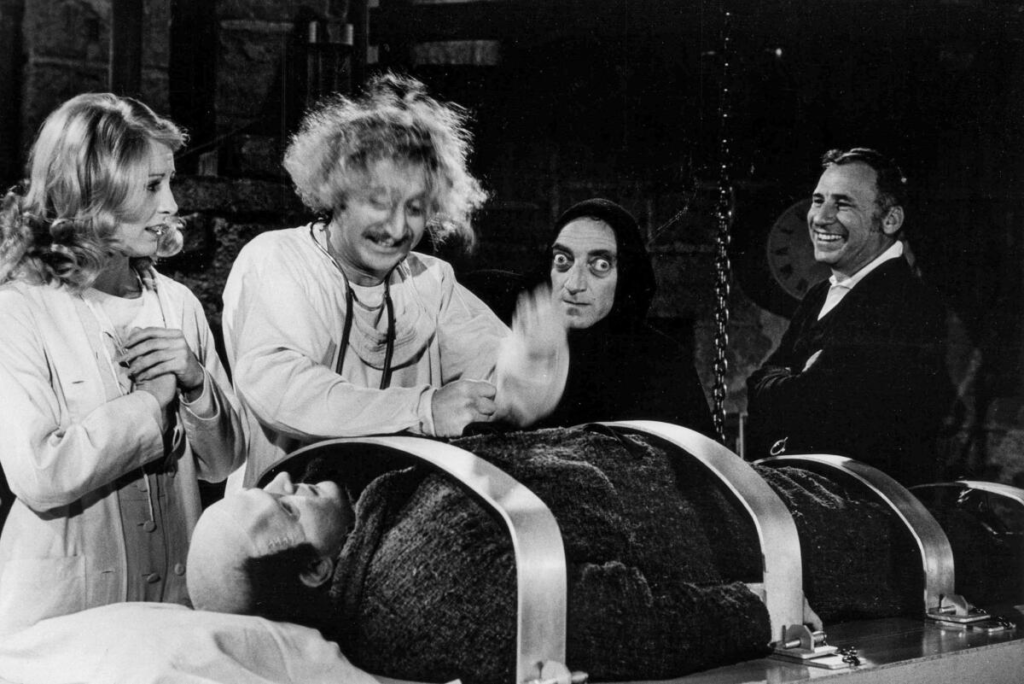
Sources & Further Exploration
- Tianjin University Brain-on-Chip AI
- 2045 Initiative Overview – Wikipedia
- Vision 2050 – World Business Council for Sustainable Development
- Star Trek: The Motion Picture – IMDB
- Star Trek TOS: The Changeling – IMDB
- The Orville (Isaac’s arc) – IMDB
- Bicentennial Man (1999) – IMDB
- Star Trek: The Next Generation – Data’s journey
- Big Yellow Taxi by Joni Mitchell – YouTube Link
- Beyond the Pump: A Narrative Study Exploring Heart Memory
- Personality Changes Associated with Organ Transplants
Frankenstein/Robot image courtesy of Lex, my Chat GPT assistant.
Disclaimer: We at Prepare for Change (PFC) bring you information that is not offered by the mainstream news, and therefore may seem controversial. The opinions, views, statements, and/or information we present are not necessarily promoted, endorsed, espoused, or agreed to by Prepare for Change, its leadership Council, members, those who work with PFC, or those who read its content. However, they are hopefully provocative. Please use discernment! Use logical thinking, your own intuition and your own connection with Source, Spirit and Natural Laws to help you determine what is true and what is not. By sharing information and seeding dialogue, it is our goal to raise consciousness and awareness of higher truths to free us from enslavement of the matrix in this material realm.
 EN
EN FR
FR



























So i wonder if every robot has the cells of different people or just one?Do they all exibit the proclivites of the donors?Do the cells or robits then remember who they came from or who owns and or controls them?A few questions first please!Is grok a recieber of cells as well?
Those are great questions! I don't have an answer since finding the information was hard enough, but something I had pondered/feared might be taking place. Science. had already experimented with rat brains to fly planes (in simulators).
https://www.newscientist.com/article/dn6573-brain-cells-in-a-dish-fly-fighter-plane/.
Sometimes when you think about something and start to look, as I was doing, answers will start showing up. I've asked Chat GPT if any material was used for it's creation and it states it is not (but would they know?). You might try looking up the companies to see if they have any articles beyond the bit media has published.
Thank you for reading and commenting on my article!